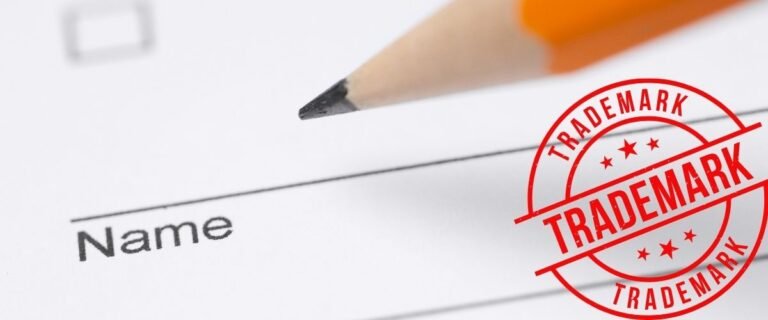
name trademark
A trademark is your brand’s unique identifier – a name, logo, or slogan – that sets your products or services apart in the Indian marketplace. It’s how customers recognize and trust your business.
The cost associated with trademarking a name or phrase in India is primarily influenced by the applicant’s entity type and filing method (online vs. offline), alongside the number of goods or services classes covered. Below is a clear outline of the official government fees charged by the Trademark Registry.
It is crucial to understand that these figures represent government fees only. The total financial outlay for trademark registration often includes professional fees if you engage a trademark attorney or agent. These professional charges can range from ₹5,000 to ₹20,000 or more, varying with the complexity of the case, the scope of assistance (e.g., in-depth search, application drafting, responding to examiner objections), and the professional’s expertise.
Furthermore, if your business operates across various categories of goods or services, each additional class for which you seek protection will incur a separate government fee.
While not legally required, registering your business name in India is a critical strategic step. Though unregistered marks offer limited “passing off” protection, a registered trademark provides robust legal backing.
In essence, trademarking your business name is a vital investment for long-term security and market advantage.
Yes, you can trademark phrases, slogans, or taglines in India. These powerful marketing tools can capture your brand’s essence, but must meet specific criteria to be registered:
Iconic slogans like Nike’s “Just Do It” are protectable because they create a unique brand association. The cost for trademarking a phrase is the same as for a name or logo, plus any professional fees for attorney assistance.
Registering a trademark in India involves several key steps:
The entire process typically takes 6 to 24 months, depending on complexities like objections or oppositions.
Intellectual Property (IP) broadly encompasses creations of the human intellect. Patents, trademarks, and copyrights are three distinct but equally vital forms of IP protection, each serving unique purposes crucial for comprehensive brand and innovation safeguarding.
| Feature | Trademark | Copyright |
|---|---|---|
| Protects | Brand names, logos, slogans, symbols, designs for goods/services. | Original literary, dramatic, musical, artistic works (e.g., books, songs, software). |
| Purpose | Prevents consumer confusion; protects brand reputation and goodwill. | Grants creators exclusive rights to reproduce, distribute their original works. |
| Duration | 10 years, indefinitely renewable. | Author’s lifetime + 60 years (or 60 years from publication for certain works). |
| Registration | Required for strong legal enforcement. | Automatic upon creation; registration provides stronger evidence. |
| Governing Law | The Trademarks Act, 1999 (India). | The Copyright Act, 1957 (India). |
| Example | The “Amul: The Taste of India” slogan. | The screenplay for “RRR.” |
Understanding the interplay and distinctiveness of these three IP forms is essential for robust business protection.
| Aspect | Trademark | Copyright | Patent |
|---|---|---|---|
| What it Protects | Brand identifiers (names, logos, slogans, symbols) distinguishing goods/services. | Original creative works (books, music, art, software). Protects expression, not ideas. | New, useful, and non-obvious inventions (products, processes, machines). |
| Core Purpose | Prevents market confusion; protects brand reputation. | Grants creators exclusive rights over their creative expressions. | Incentivizes innovation by granting temporary monopoly over inventions. |
| Criteria | Distinctive, non-descriptive, non-generic, not misleading. | Original (not copied); fixed in a tangible form. | Novelty (new), non-obviousness, utility (practical application). |
| Duration | 10 years, indefinitely renewable. | Author’s life + 60 years (or 60 years from publication). | Generally 20 years from filing date (utility patents). |
| Registration | Required for strong legal enforcement. | Automatic upon creation; registration optional but recommended. | Mandatory; involves complex technical examination. |
| Examples | Reliance Industries logo, “Dabur” brand name. | A song by A.R. Rahman, a novel by Amish Tripathi. | A new method for water purification, a novel electric vehicle battery design. |
In essence, a trademark tells consumers who made or sold something. A copyright protects what was created—the artistic or literary work itself. A patent protects how something works or what it is—the invention. Together, these form the bedrock of a comprehensive intellectual property strategy for any business or individual in India.
Proactive searching for trademark availability and diligent monitoring of your application status are crucial steps in the registration journey.
This is the foundational step to avoid potential conflicts and save resources.
After filing, consistent monitoring of your application’s progress is essential for timely responses to any official communications.
Regular status checks enable prompt action, ensuring a smoother and more efficient registration process.
While trademarks are powerful tools for brand distinction, their scope is defined and has limitations. Certain elements are generally not afforded trademark protection in India:
It’s vital to remember that registering a business name does not automatically protect its design, content, or underlying methods. Each aspect of your business might require distinct forms of intellectual property protection.
A New Chapter in Learning Books have always carried knowledge across generations yet access has never been fair. In some…
Freshers Day is an exciting milestone for every new student, marking their official welcome into college life. It's a day…
Now it has become much easier and more convenient to get acquainted in the virtual space than in the real…
The rise of technology has redefined the traditional notions of work and income, giving birth to a new era of…
Breeding dogs can be a rewarding business, both emotionally and financially. However, it's essential to choose the right breed to…
In today's digital age, maintaining eye health is more critical than ever. With prolonged screen time and exposure to artificial…